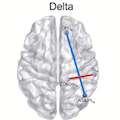Abstract
Objectives Addictions have recently been classified as substance use disorder (SUD) and behavioral addiction (BA), but the concept of BA is still debatable. Therefore, it is necessary to conduct further neuroscientific research to understand the mechanisms of BA to the same extent as SUD. The present study used machine learning (ML) algorithms to investigate the neuropsychological and neurophysiological aspects of addictions in individuals with internet gaming disorder (IGD) and alcohol use disorder (AUD).
Method We developed three models for distinguishing individuals with IGD from those with AUD, individuals with IGD from healthy controls (HCs), and individuals with AUD from HCs using ML algorithms, including L1-norm support vector machine, random forest, and L1-norm logistic regression (LR). Three distinct feature sets were used for model training: a unimodal-electroencephalography (EEG) feature set combined with sensor- and source-level feature; a unimodal-neuropsychological feature (NF) set included sex, age, depression, anxiety, impulsivity, and general cognitive function, and a multimodal (EEG + NF) feature set.
Results The LR model with the multimodal feature set used for the classification of IGD and AUD outperformed the other models (accuracy: 0.712). The important features selected by the model highlighted that the IGD group had differential delta and beta source connectivity between right intrahemispheric regions and distinct sensor-level EEG activities. Among the NFs, sex and age were the important features for good model performance.
Conclusions Using ML techniques, we demonstrated the neurophysiological and neuropsychological similarities and differences between IGD (a BA) and AUD (a SUD).
